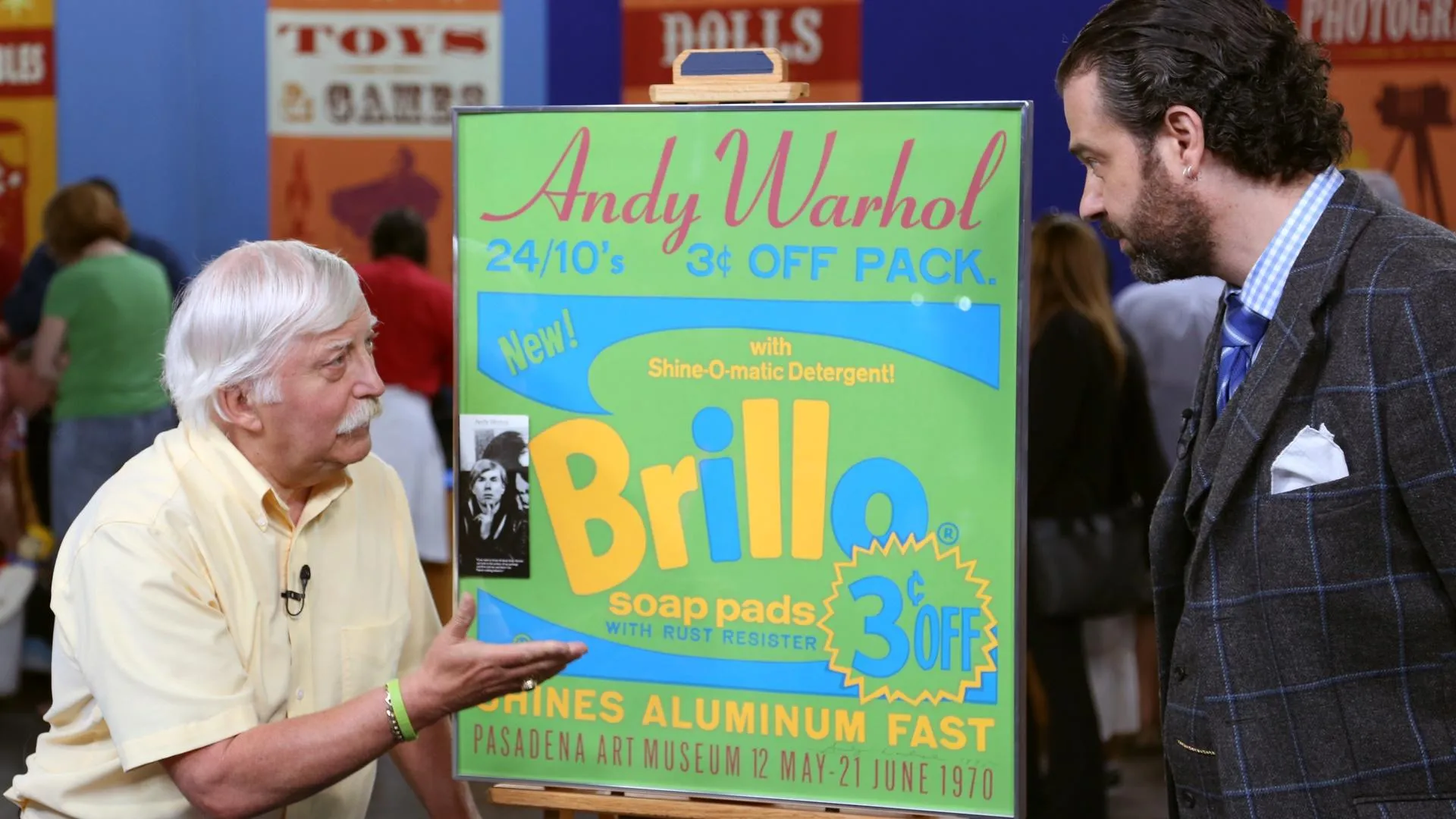GUEST: I'm way into Pewabic Pottery. It's a Detroit-based pottery started by Mary Chase Perry Stratton.
APPRAISER: And when did she start potting?
GUEST: 1903, I think. Before that, I think she was doing some china painting. To my knowledge, she was encouraged by one of her benefactors, Mr. Freer, to try to develop a patinated glaze much like a buried, Middle Eastern glaze like in glasses.
APPRAISER: Like Roman glass.
GUEST: Exactly.
APPRAISER: But she started out doing matte glazed pottery, did she not?
GUEST: Very early, yeah, earlier in matte greens and some overflow pieces.
APPRAISER: The pottery is still in business, correct?
GUEST: Yes.
APPRAISER: Well, you have three different pieces of Pewabic here from three different periods. We have a tile, which is a bit later. I call it a tile, anyway. It's an Alice in Wonderland tile. What's the date of this?
GUEST: I was thinking it was probably the teens, maybe the 1920s.
APPRAISER: The iridescent piece I would date sometime between 1912 and 1917. It's a good early one. This is pre-1910. This would be maybe 1907, 1908, her earliest germinal work. The Alice in Wonderland tile, we've seen some of these before. They're all hand-cut, but more or less, there's some repetition of theme. This one you bought for how much?
GUEST: $600 without the frame. I just had the frame made for it.
APPRAISER: And you saw one similar to this sell recently?
GUEST: November, December of 2011 in Cincinnati, sold for $2,700.
APPRAISER: That's a lot of money for this tile. I think it's more likely to be a $1,500 to $2,000 tile.
GUEST: That's what I was thinking.
APPRAISER: You still did well with that one. The iridescent piece, you've had that one how long?
GUEST: March of 2009. I bought that here in Detroit at an auction house.
APPRAISER: And you paid how much for that?
GUEST: $525 as an unmarked piece of Pewabic.
APPRAISER: But you did locate a mark on this piece...
GUEST: It was pretty clear to me, yes.
APPRAISER: There's a circular Pewabic mark on this, and this didn't look like this when you bought it.
GUEST: No, it was covered in, like, brown nicotine smoke. When I knew what it was and I started to wipe it down very carefully with some warm water, it just started to come alive.
APPRAISER: It's a porous glaze, and that's the sort of thing that cooking grease will adhere to that. But a really good example of their iridescent pottery. I love it when it's organic and gloppy. A piece like this at auction, I would estimate it for between $10,000 and $15,000.
GUEST: Oh, my, thank you!
APPRAISER: It's really good, and it could do in excess of that. Finally, the earlier matte piece. Now, these are done by Stratton herself.
GUEST: Right.
APPRAISER: She threw them, she carved them, they're one-of-a-kind pieces of what she was known for early on. This uranium orange glaze is most unusual. I've not seen it before, and I think it really makes it special. This one you paid how much for?
GUEST: About $225 from an heir of somebody that worked at the pottery.
APPRAISER: While they're one of a kind, I had one just like this in green about ten years ago, and I sold it privately, not at auction. I sold that one for $22,000.
GUEST: Oh, my!
APPRAISER: This one at auction, I'd estimate right now for $25,000 to $35,000 at auction. And in my opinion, and I've got goose bumps here-- it's not my first time around the race track; I've seen a lot of this stuff-- this is the best piece of Pewabic I've ever seen.
GUEST: Oh my gosh.
APPRAISER: I think this would be in any museum in America that had American art pottery in it, and while I think the estimate at $25,000 to $35,000 is reasonable, I see no reason why a piece like this couldn't do $50,000 or more. This is a major piece of pottery.
GUEST: That's amazing.
APPRAISER: Thank you, thank you.
GUEST: No, thank you, sir.
APPRAISER: (chuckling): We are not worthy.








